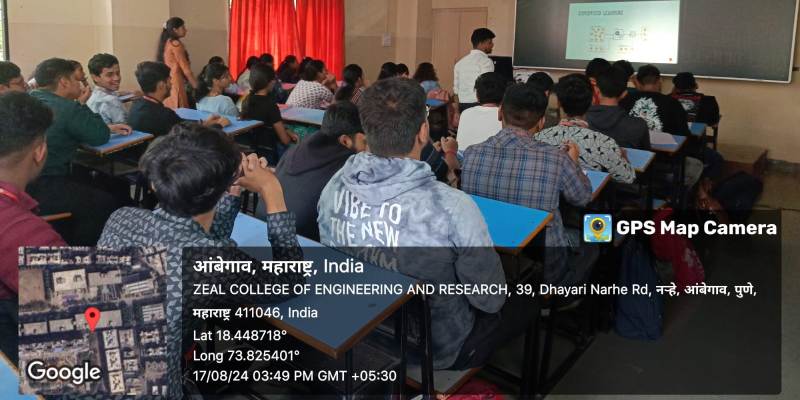Date of Programme: 17/08/2024
Resource Person/ Facilitator:
Mr. Kashinath Vhanmane,
CEO & Founder, Ascii Education LLP.
Summary:
Key Areas:
What is AI?
How AI relates to Machine learning
What Is Deep Learning
Supervised Learning
Unsupervised Learning
Reinforcement learning
What is AI?:
Artificial Intelligence (AI) refers to the development of computer systems that can perform tasks typically requiring human intelligence. These tasks include learning, reasoning, problem-solving, understanding language, and recognizing patterns. AI enables machines to adapt and improve from experience, making them increasingly capable of handling complex tasks and decision-making processes autonomously.
How AI relates to Machine learning:
Artificial Intelligence (AI) is a broad field focused on creating systems that mimic human intelligence. Machine Learning (ML) is a subset of AI that enables machines to learn from data and improve their performance over time without being explicitly programmed.
What Is Deep Learning:
Deep Learning is a subset of machine learning that focuses on neural networks with many layers (often called deep neural networks). It enables computers to learn complex patterns and representations from large amounts of data by passing the data through multiple layers of neurons, each layer refining the understanding. Deep learning excels in tasks like image recognition, natural language processing, and autonomous driving, where the relationships are complex and hierarchical
Supervised Learning:
Supervised learning is a type of machine learning where an algorithm is trained on a labeled dataset. In supervised learning, the goal is to learn a mapping from inputs (features) to outputs (labels) based on examples provided during training.
Types of Problems: Supervised learning problems can be broadly categorized into:
- Classification: Predicting categorical labels. For example, determining whether an email is spam or not spam.
- Regression: Predicting continuous values. For instance, predicting house prices based on features like size and location.
Unsupervised Learning:
Unsupervised learning is a type of machine learning where the algorithm is trained on data that does not have labeled responses. Unlike supervised learning, which uses labeled data to predict outcomes, unsupervised learning seeks to find hidden patterns or intrinsic structures within the data itself.
Types of Problems: Unsupervised learning problems can be categorized into:
- Clustering: Grouping data points into clusters based on similarity. For example, customer segmentation in marketing, where customers are grouped into segments with similar purchasing behaviors. Common algorithms include K-means, hierarchical clustering, and DBSCAN.
- Dimensionality Reduction: Reducing the number of features or dimensions in the data while preserving as much information as possible. This is useful for simplifying models and visualizing high-dimensional data. Techniques include Principal Component Analysis (PCA) and t-Distributed Stochastic Neighbor Embedding (t-SNE).
Reinforcement learning:
Reinforcement Learning is a type of machine learning where an agent learns to make decisions by interacting with an environment and receiving feedback in the form of rewards or penalties. The goal is to maximize cumulative rewards over time by improving decision-making through trial and error.
Example: In a video game, a reinforcement learning agent might learn to navigate a maze by receiving rewards for reaching the end and penalties for hitting walls. Over time, the agent optimizes its strategy to complete the maze more efficiently.
Objective/Purpose:
To understand the core principles and types of Machine Learning, Gain familiarity with common ML algorithms and their uses, Learn about real-world applications and the impact of ML, Get an overview of tools and resources for implementing ML solutions






